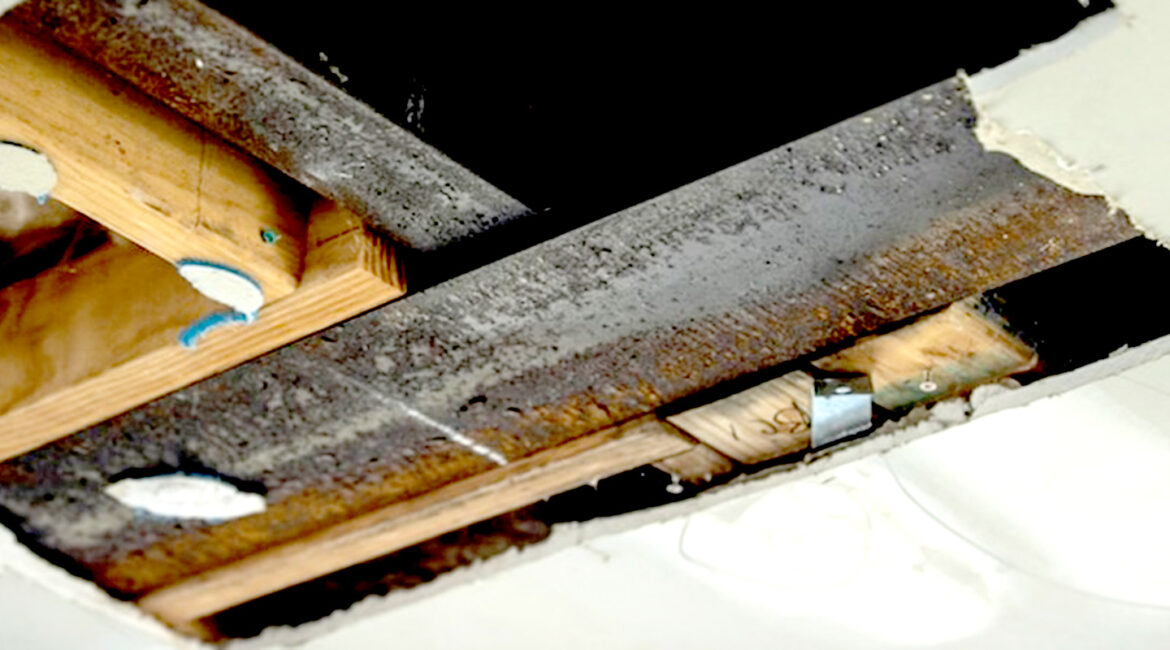by Biju Balakrishnan FIEAust CPEng NER
Principal Structural Engineer at Intrax PROJECTS
No one wants to demolish their new home within four years of construction due to durability issues. That is what happened to a homeowner in Tasmania whose family dreams were shattered because of a poorly designed home. This would never have happened if the building team had been copetent to design and construct the house for the required durability.
Durability is something that is often forgotten in the design and construction process and ends up with disastrous consequences for developers, builders, and house owners.
Australia is a country with a large land mass, extensive coastlines, and aggressive environments. Designing and constructing buildings requires knowledge, expertise, and experience, Intrax has these. According to the Australian Corrosion Association (ACA), around 4.35%($78 billion) of GDP per annum is being spent on remediating assets affected by corrosion.
This article reviews the current requirements under the National Construction Code (NCC) for durability, Australian Standard requirements, and acceptable industry practices.
What is durability?
“Durability is the ability of a physical product to remain functional, without requiring excessive maintenance or repair when faced with the challenges of normal operation over its design lifetime.”
The above definition from Wikipedia sums up durability well. The important element in durability design is to establish the “design life” of a structure.Many external factors reduce the durability of a structure, such as the sun, rain, chemicals, aggressive environment, and various life forms.
Durable structures can be designed with maintenance interventions if the structural element is accessible for maintenance. For example, an exposed steel beam in a veranda can be designed for 25 years of durability even though the structure demands 50 years of life. The structure needs to be re-coated after 25 years to cover the rest of its life.
How do I ensure durability for building materials?
Residential construction mainly uses concrete, steel, timber, and brick masonry as structural members. All these materials need durability design based on the intended design life. Even though the use of steel is minimal in residential construction, if used uncoated, durability issues in steel are common due to its highly corrosive nature.
Timber is extensively used in residential construction and is non-corrosive. If timber is to be exposed to weather, the right selection of timber and treatment is required. Even though timber is non-corrosive, the timber connections (nails, nail plates, tie downs, screws, bolts) need corrosion protection. Galvanising is the preferred method of protection for connections. Self-drilling screws for the building and construction industries shall comply with AS 3566.1.
Concrete footing hidden in the ground also requires a damp-proof membrane and minimum cover. Footings in aggressive and contaminated soil might also need appropriate concrete strength and additional cover.
Concrete above ground is more susceptible to durability issues and might need closer attention.
Masonry is often used as a cladding element (brick veneer construction) and the components in masonry such as lintels and brick ties create durability issues for masonry, rather than the masonry itself. Compliance with AS/NZS 2699 is essential for masonry components in residential buildings.
National Construction Code (NCC)
The NCC is Australia’s primary set of codes for technical design and construction provisions for buildings. For residential construction, NCC Vol 2 is the governing code for design and construction.
Since NCC refers to other Australian Standards as referred documents, compliance to relevant Australian Standards is also required to comply with NCC. For example, compliance with AS 2870 and AS 3600 will ensure durability requirements for footing, and compliance with AS 4100, AS 4600, and AS 2312 will ensure durability requirements for steel.
For timber, compliance with AS 1720, AS 1684, AS 1604, and AS 5604 are required to meet the durability requirements.Masonry shall comply with AS 3700 and AS 4773. Light gauge steel structures shall comply with NASH standards.
Buildings near the beach, what are the additional requirements?
This question is raised by many builders and homeowners. The quick answer is to comply with the NCC and referred Australian Standards. The defining parameter for concrete members (footings in this case) is exposure classification to AS 3600.
Steel is more corrosive near beaches due to saline atmospheric conditions. Special consideration shall be given to exposed steel members and hidden masonry components such as lintels and brick ties. Defining an appropriate durability rating for building components will ensure durable structures.
In certain cases, the minimum requirements in NCC are not sufficient to meet the durability and practitioners shall refer to other industry guidelines such as galvanizers association technical manuals to design for durability.
Do I need treated timber?
Timber is a durable material if it is not exposed to alternate wet and dry weather conditions. While timber is susceptible to attack from living organisms (termites, borers, fungus, and insects), we can avoid such durability issues by enclosing members sufficiently or by selecting a durable species/treated timber.
Since frames, roof trusses, and floors in residential buildings are protected from moisture and attack from living organisms, even softwood will last for more than 50 years. Therefore, timber within building elements doesn’t require any additional treatment other than seasoning. Machine Graded Pine (MGP10) which is a common stud material, is commonly used untreated within wall frames, floors, and roofs.
This is not the case if your timber is used in the ground or above ground. In such a scenario compliance with AS 1684, AS 1604 and AS 5604 is necessary based on what timber is used.
For example, IronBark, a hardwood species, has more than 40 years of durability when used outside whereas untreated softwood species Radiata Pine will last only 0-7 years.
Treating timber is an effective way to increase its durability. Hazard classification to AS 1604.1, Table 1.1, and appropriate preservative treatment is required. Copper Chromium Arsenic (CCA), a common treatment option for timber, is not suitable for public places and schools due to health hazards. Light Organic Solvent-Borne Preservatives (LOSP) are to be specified in such instances.
Close coordination between structural engineers and architects is necessary to select the appropriate species and treatment options.
What coating should I use, galvanising or painting?
Steel is highly corrosive due to the oxidation of iron into its oxides. There are three strategies we can adopt to increase the durability of steel 1. Painting 2. Zinc coating (Galvanising) and 3. Cathodic protection.
In residential applications, Galvanising is common due to its high effectiveness and offsite application. Based on the durability requirements Galvanising thickness can be varied to achieve life up to 50 years.
Paint coating is more effective than Galvanising in highly corrosive environments due to its flexibility in designing to specific requirements. It is important to design the Dry Film Thickness ( DFT) to provide enough durability based on the external atmospheric conditions.
Galvanising and painting (also known as duplex systems) are also common for lintels in coastal areas.
Cathodic protection is more suitable for infrastructure construction such as bridges and tunnels.
How to make durable buildings?
It is important to work with a competent design team who are experienced in the durability of materials, to design and construct buildings that can last for their intended life.
With the right material selection, design, detailing, and maintenance, the building structure can perform satisfactorily to its intended use. It is not rocket science!
Architects, engineers, and specifiers shall design for durability and specify the right material specification and coating requirements. Concrete and mortar strengths, timber durability rating, steel coating thickness, and maintenance regime, the strategies are many.
Durability is not just for the structural performance of buildings but also encompasses the functional aspects as well. For example, a steel structural beam stained due to corrosion may still function as a structural member but may not be acceptable in a living room.
Therefore, it is critical to understand the various functional uses and performance requirements. Structural engineers need to work closely with architects to design appropriate durability requirements.
Compliance with NCC and referred Australian Standards will ensure durable buildings. We don’t want anyone thinking of demolishing their building because of durability issues. Engage Intrax to ensure the longevity and quality of your project.







